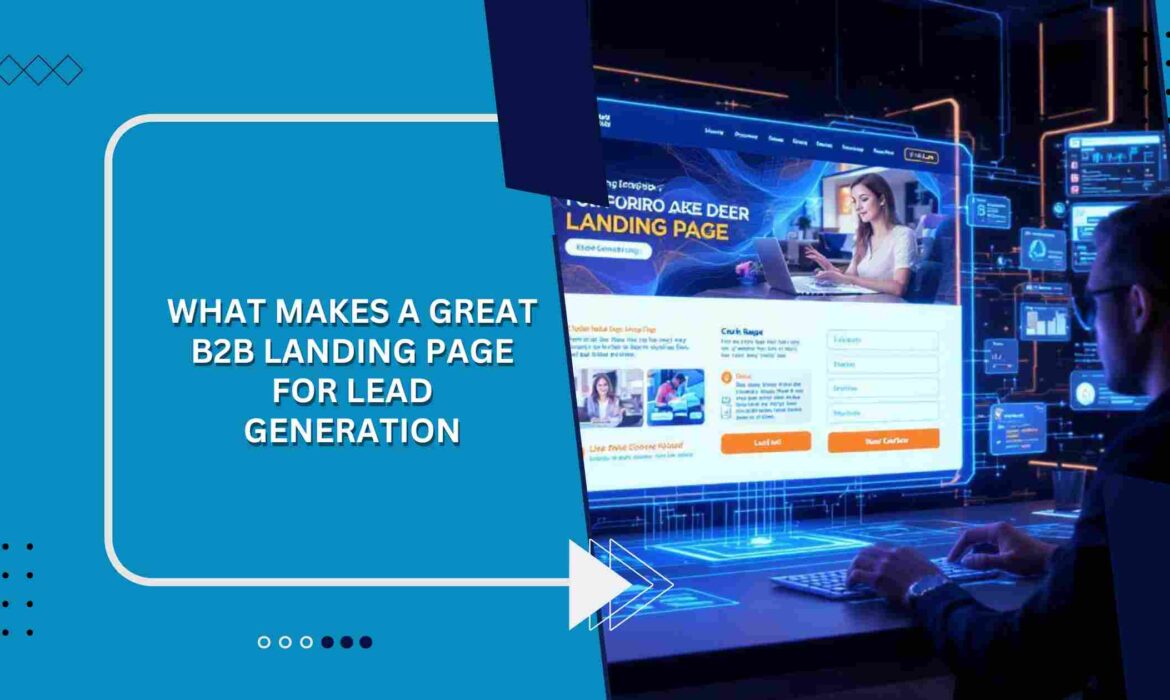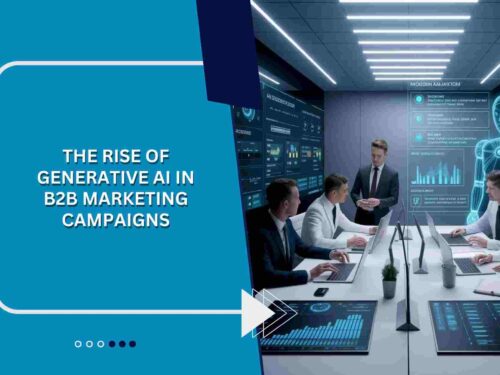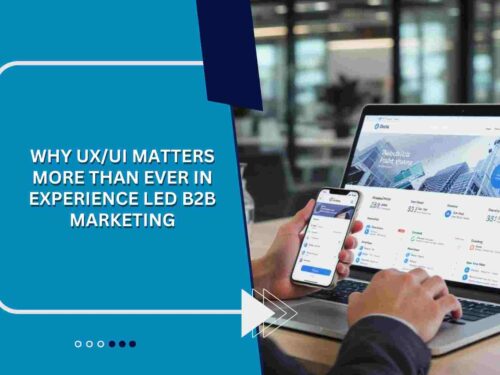In today’s competitive digital marketing space, B2B landing pages serve as pivotal conversion tools. They are not just informational touchpoints they are strategic assets crafted to convert curious visitors into qualified leads. As businesses grow more data-driven and buyers become increasingly discerning, the design and functionality of your landing pages can make or break your lead generation success.
Well-crafted B2B landing pages align with the needs of targeted prospects while addressing their intent at each stage of the buyer journey. Whether you’re offering a whitepaper, demo, free trial, or consultation, a landing page must deliver value, clarity, and persuasive messaging in just seconds.
Designing an engaging B2B landing page requires both creativity and strategy. It demands sharp content, thoughtful design, a seamless user experience, and a clear value proposition. When done right, landing pages become powerful demand-generation tools that move prospects through the funnel with intent and purpose.
The Purpose of High-Converting B2B Landing Pages
Unlike general web pages, B2B landing pages are designed with one focused objective conversion. This could mean capturing a visitor’s email, scheduling a sales call, downloading a report, or registering for an event. Every element on the page should point toward that single conversion goal.
A landing page removes distractions like navigation menus and unrelated links. This singularity ensures that visitors focus only on the message and the desired action. In B2B marketing, where buyers often take longer to make decisions, a focused landing page can shorten the cycle by delivering compelling, relevant content at just the right moment.
Audience Segmentation and Personalization
Effective B2B landing pages speak directly to the target persona. Before designing any page, marketers must understand the specific audience segment they are targeting. Is the visitor a decision-maker, a technical evaluator, or a procurement officer? What challenges are they trying to solve?
Personalization boosts engagement. Incorporating dynamic content that changes based on user behavior, location, industry, or campaign source can significantly improve relevance and conversion rates. Customized headlines, case studies, or testimonials tailored to the visitor’s vertical or role build trust and foster stronger connections.
Clear and Compelling Headlines
The headline serves as the first impression and often the only opportunity to grab attention. The most successful B2B landing pages feature headlines that are benefit-driven, concise, and aligned with the user’s intent.
A good headline answers the question: “What’s in it for me?” It should communicate the value of the offering in plain language, without jargon. Supporting subheadings can elaborate on the benefits or highlight a pain point the solution addresses. Combined, the headline and subheading should immediately validate the visitor’s reason for clicking.
Engaging Visual Design and Branding
Design plays a critical role in guiding user behavior. A cluttered or outdated layout can sabotage conversions before users even read the copy. Successful B2B landing pages use modern, clean, and responsive designs that prioritize readability and visual hierarchy.
Consistent branding, appropriate color contrast, and smart use of white space enhance trust and reduce friction. Visual cues like arrows, contrasting call-to-action buttons, and directional images help guide users toward the next step. Mobile responsiveness is essential, especially with B2B research increasingly conducted on smartphones and tablets.
Strong Calls-to-Action (CTAs)
The call-to-action is the heartbeat of all B2B landing pages. Whether it’s a button that says “Download Now,” “Get a Free Quote,” or “Request Demo,” it must be bold, persuasive, and actionable.
CTAs should stand out visually and appear multiple times throughout the page, especially on longer layouts. Using action verbs and benefit-driven language enhances engagement. For example, “Get My Free SEO Report” performs better than just “Submit.” Testing different CTA placements and phrasings is key to optimizing performance.
High-Value Lead Magnets
To convince visitors to share their contact details, the page must offer something of tangible value. This could be a gated eBook, a product trial, a webinar invites, or a personalized audit. The more valuable and relevant the offer, the higher the conversion rate.
Effective B2B landing pages present lead magnets as solutions to the visitor’s challenges. Instead of simply stating “Download Our Guide,” the copy should focus on the benefits: “Discover 7 Proven Strategies to Reduce IT Costs in 30 Days.” Positioning the lead magnet as essential for solving a specific problem boosts its appeal.
Trust Signals and Social Proof
In B2B environments, trust plays a massive role in decision-making. Buyers want assurance that your company can deliver results. That’s why B2B landing pages should include social proof such as client logos, testimonials, case study excerpts, awards, and certifications.
Testimonials work best when they’re specific and include job titles and company names. Video testimonials or short clips from satisfied clients increase credibility even further. Third-party review site badges or trust seals (like SSL certificates or data privacy guarantees) also reduce skepticism.
Short, Smart Forms
One of the top barriers to conversion is an overly complicated form. Visitors are far less likely to convert if they’re asked to provide too much information upfront. The best B2B landing pages use short, strategic forms asking only for what is necessary to qualify a lead or deliver the promised resource.
Consider using progressive profiling, where the form gathers more information over time, rather than all at once. Autofill, dropdown menus, and mobile-friendly fields enhance usability. Positioning forms above the fold and repeating the CTA below helps ensure maximum visibility.
A/B Testing and Optimization
Landing page success isn’t built overnight it’s refined over time. Marketers must continuously test and optimize every element of their B2B landing pages. This includes testing different headlines, CTA texts, button colors, imagery, form fields, and even trust signals.
Split testing reveals what resonates most with your audience and eliminates guesswork. Analytics platforms like Google Optimize or HubSpot allow real-time insights into conversion behavior, bounce rates, and time on page essential metrics for continuous improvement.
Speed and Performance Optimization
Page load speed directly impacts conversions. Slow-loading B2B landing pages lead to frustration and abandonment. Ensuring fast performance across devices is critical, particularly as B2B buyers expect the same seamless experience as B2C consumers.
Compressing images, minimizing code, enabling browser caching, and using reliable hosting all contribute to better performance. Lightweight landing page builders and AMP (Accelerated Mobile Pages) can also improve speed without compromising design.
SEO and Paid Campaign Integration
Even the best-designed landing page is ineffective if no one sees it. Integrating SEO best practices ensures that B2B landing pages appear in organic search results. Using targeted keywords, meta tags, schema markup, and optimized URLs helps drive qualified traffic.
For paid media campaigns, aligning the ad copy with the landing page content ensures message match and improves quality scores. A cohesive funnel from ad to landing page to thank-you message creates a smooth user experience that reinforces trust and increases conversion rates.
If you want to elevate your lead generation game, Acceligize is here to help you. To learn more about marketing qualified leads, contact us now.




